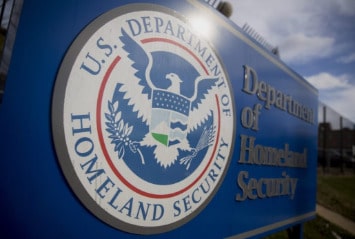Proposed bipartisan legislation would “address capability gaps” at border crossings by requiring the Department of Homeland Security (DHS) to develop and present to Congress a plan to integrate technologies such as AI, machine learning, biometrics and nanotechnology into border control.
The proposal follows the federal government’s release of an AI Roadmap for DHS, which itself followed the White House’s Executive Order 14110 on developing trustworthy, safe and secure AI that is used for the benefit of Americans. One of the Roadmap’s examples of AI use is the CAT2 scanners that match air travelers to their passport image with face biometrics.
Under the law, DHS would be required, within 180 days, “to submit a comprehensive plan to Congress to identify, integrate, and deploy new, innovative, disruptive, or other emerging technologies into border security operations.” The plan is to include metrics, key performance indicators, and privacy and security assessments.
A release from Representatives Lou Correa (D-CA), the top Democrat on the House Border Security and Enforcement Subcommittee, says investing in security-enhancing technologies such as remote sensors and AI-powered image recognition systems will help Customs and Border Protection (CBP) identify and respond more quickly to life-threatening situations, detect migrants crossing in hazardous conditions, and respond to victims of human trafficking.
Correa says “new, bleeding-edge technology that is already available for commercial use would give our hard-working officers the tools they need to keep us safe. Through this bipartisan effort, Congress will better-understand how our officers can use new technology to stop smugglers, as well as identify and respond when migrants are crossing in remote and deadly conditions, and hopefully deliver them the resources they so desperately need.”
“As cartels and foreign adversary operations become more sophisticated amidst the ongoing border crisis, the United States must deploy the latest and most advanced technologies available to our borders to disrupt these threats,” says Luttrell. “I’ll continue to push for effective measures to safeguard our country and enforce our laws.”
Regardless of whether upgrades at the border are intended to help migrants cross or keep them out, Correa’s observation that many of the sought-after technologies are already commercially available still applies. The Emerging Innovative Border Technologies Act aims to capitalize on this, in that it would authorize CBP Innovation Teams to “research and adapt commercial technologies that are new, innovative, or disruptive into border security operations to address both capability gaps and urgent mission needs and assess their potential outcomes.”
The legislation also requires CPB to clarify operating procedures, roles and protocols around new technologies used in border control.
Among the areas of research the legislation would require CPB to look into, standouts include mobile surveillance vehicles, “deployable, lighter-than-air ground surveillance equipment,” tunnel detection, and “any other information the Secretary determines relevant.”
A fact sheet on the legislation is available here.
Article: US law proposed for DHS to make a plan for integrating AI into border control
